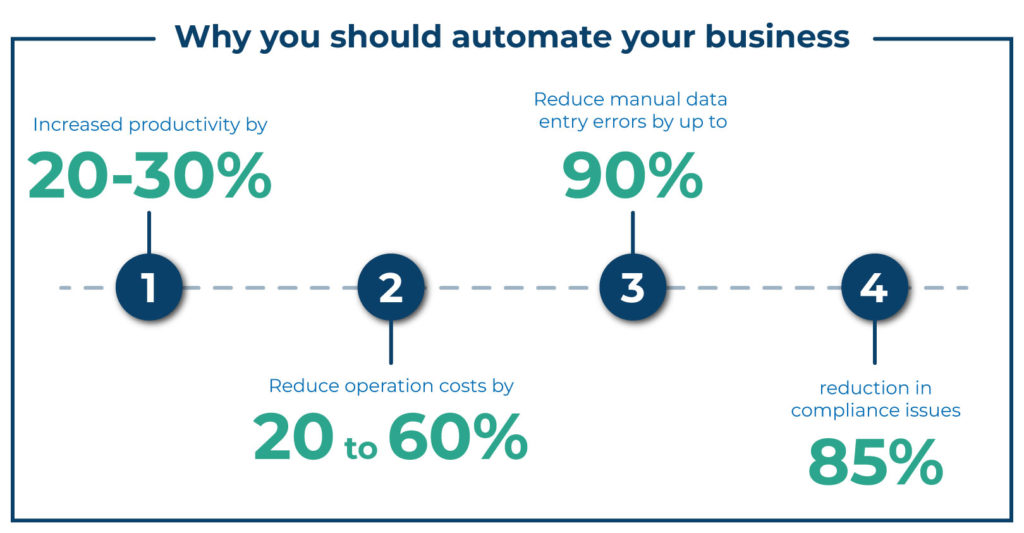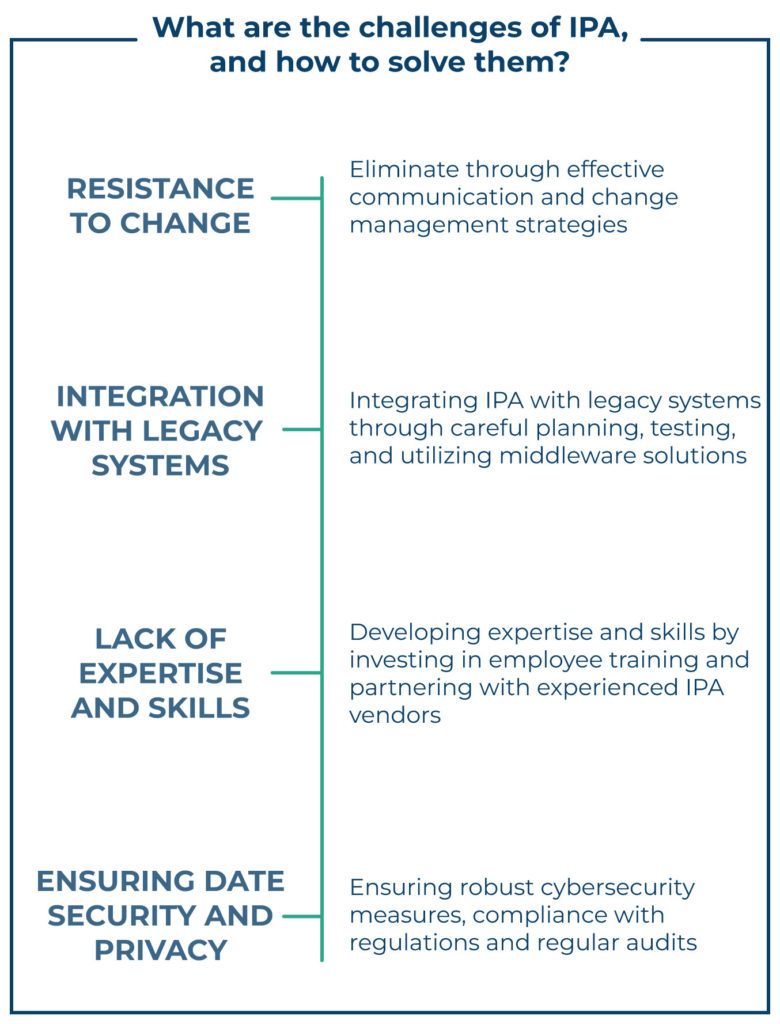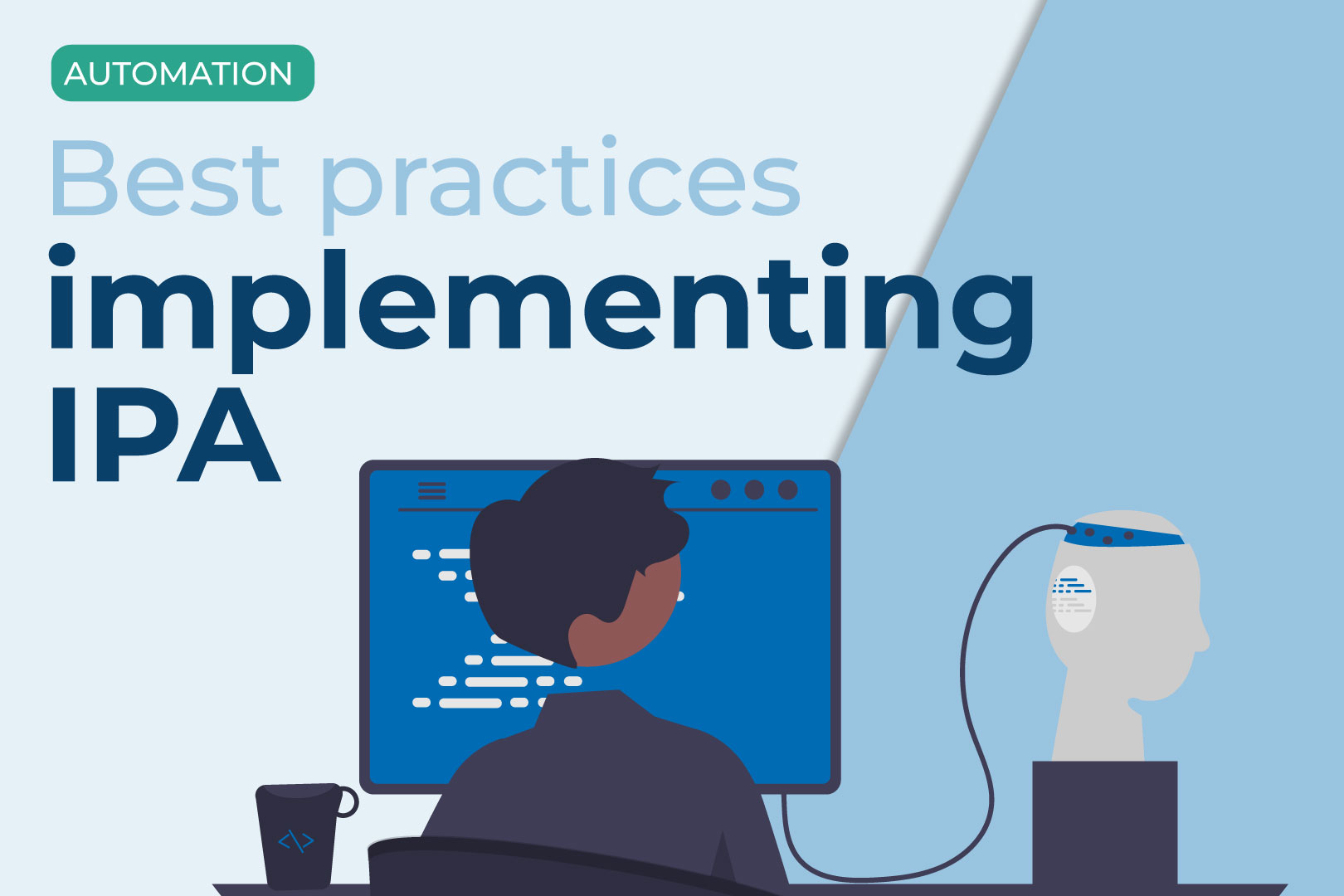What is the importance of IPA for organizations?
Intelligent Process Automation (IPA) is a cutting-edge technology that can revolutionize your business processes by automating repetitive and time-consuming tasks. It is a combination of Artificial Intelligence(AI), Robotic Process Automation (RPA), and Machine Learning (ML), making it highly adaptable and capable of delivering increasingly accurate results over time. With IPA, businesses can automate a wide range of processes, from reading manual data to streamlining document workflows, and even enhance customer service by automating information mining and processing. By leveraging IPA, businesses can optimize their operations, reduce errors, and save valuable time and resources.
Intelligent Process Automation (IPA) is not just for technically inclined individuals and has wider application when considering document management. In fact, it is purposeful for anyone who wants to streamline their tasks, eliminate repetitive work, and free up time for more productive activities.

Best Practices for Implementing IPA
How defining IPA goals will help your organization?
One of the best practices is to define your goals and objectives clearly before starting the planning for the implementation process. These goals can vary depending on the organization’s needs. To define IPA goals, companies should start by identifying areas where IPA can make the most significant impact.
By defining your goals upfront, you can align your IPA initiatives with the organization’s strategic vision and ensure that everyone is working towards the same objectives.
How to develop an implementation plan?
To create a clear plan of action, it is important to create a roadmap, identify the processes that need to be automated, prioritize them, and allocate resources.
Steps to consider when creating an IPA implementation plan include identifying the goals and objectives of the process you want to automate, selecting the right tools and technology, considering the intended users of the IPA solution, defining the scope and timeline, testing, and validating the solution, and updating the process.
To learn more about becoming a digital-first organization, check out this insightful blog.
A study by Deloitte found that 42% of organizations surveyed reported that developing an implementation plan was the most crucial factor in successful intelligent automation implementation.
How to choose the right solutions for IPA automation?
To choose the right tools and technologies for implementing IPA you will need, to consider the complexity of the implementation process and the compatibility of the tool with existing systems. This ensures that the tool can handle the process, integrates well with pre-existing system, and is supported in the long term.
In today’s world, technological advancements have ushered in a multitude of automation solutions each offering different USPs. To find the most fitting solution, it is necessary to comprehensively evaluate your organizations’ requirements and needs. This will enable decision-makers to make an informed choice that aligns with your business objectives and promote productivity.
Now that the hows are out of the way, let us focus on the whys.
Why identifying the right solution is necessary?
Analysing business operations and determining which areas can benefit the most from automation is crucial. Not identifying the right solution for IPA implementation can result in inefficient and ineffective automation, leading to increased errors, productivity loss, and ultimately, a waste of resources.
Along with considering factors such as complexity, cost, and potential benefits, it is also important to weigh the advantages and disadvantages of different IPA tools, including their features, scalability, and ease of use, to ensure that the selected tool meets the organization’s specific needs and goals.
A thorough analysis of the current workflow can also help identify bottlenecks and areas that could be improved with automation, ultimately leading to increased efficiency and productivity.

If you’re interested in learning how legacy systems can still embrace digitization, check out this informative blog.
The benefits of IPA are numerous, from increased productivity to an improved customer experience, and the advantages of automating processes are undeniable.
Finally, to stay ahead of the competition, it is important to remember that implementing IPA is not a one-time event but a continuous journey towards process improvement. Therefore, it is crucial to evaluate the success of your IPA implementation by regularly monitoring key performance indicators and metrics to identify areas that need improvement.
So, go ahead and take the first step towards implementing IPA in your organization today and start your journey towards efficiency.


